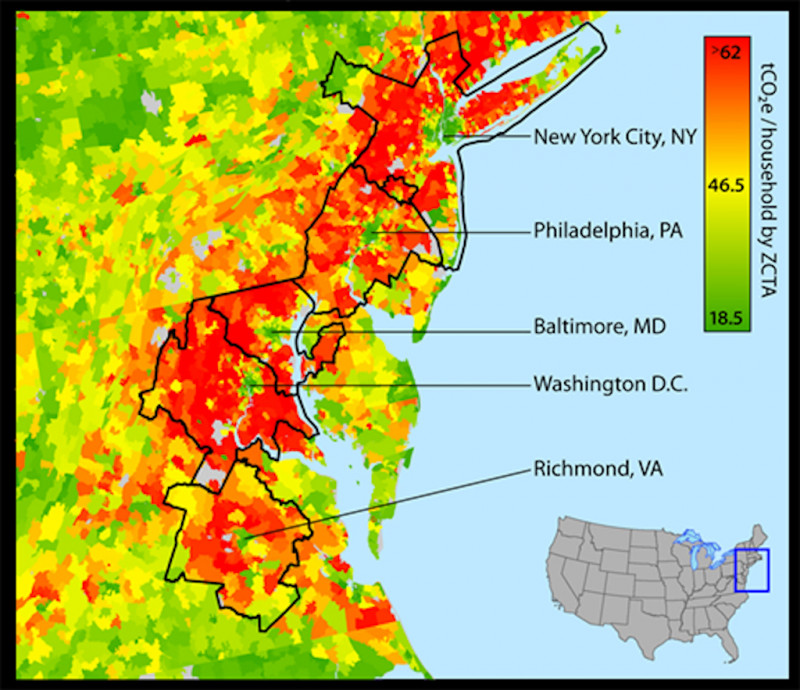This map shows how low-density sprawl makes climate change worse

Low-density developments that prioritize detached single-family homes and automobile use disproportionately contribute to climate change. Image by La Citta Vita licensed under Creative Commons.
Most Americans surveyed in a recent poll (including a majority of city dwellers) believe that high density is bad for the environment. In reality, however, sprawl is probably much worse for creating carbon dioxide emissions.
As the map below from the University of California Berkeley’s CoolClimate Network shows, large metropolitan areas are substantial contributors to carbon dioxide emissions throughout the Mid-Atlantic (CoolClimate’s data show similar trends throughout other parts of the country). But the volume of emissions varies widely within metropolitan areas.
On the map, lower emission green spots appear in central Richmond, the District of Columbia, Baltimore, Philadelphia, Northern New Jersey, and New York City, as well as in a number of rural communities outside of metropolitan areas. Higher emission orange and red areas dominate in the suburban areas, however.
According to the researchers’ data, household income, vehicle ownership, and home size make up the biggest predictors of emissions. In other words, in low-density areas, more driving, higher energy use from larger houses (as well as housing type, and higher consumption increase greenhouse gases.
This means suburban ZIP codes can emit up to four times the household emissions of their urban counterparts –enough to more than wipe out any gains from lower C02 emission-households in higher density areas.
The researchers caution that increasing density is not necessarily a panacea, but their work highlights the correlation between land use and household greenhouse gases. In fact, other researchers such as Brookings, have estimated that meeting the United States’ 2030 emissions goals will be impossible without changing our cities – even with widespread electric vehicle adoption.
It is worth making a distinction between ‘suburban’ (low-density development) and ‘suburbs’ (jurisdictions outside of a central city), since sprawl doesn’t begin or end at city lines. Some of Greater Washington’s densest neighborhoods are not in Washington, DC at all, and some of the inner ‘suburbs’ have lower emissions per household than areas with sparser development in Northwest DC, according to the data.
C02 emissions in the Washington region correlate with low density.
Source: https://coolclimate.berkeley.edu/maps 
The CoolClimate’s data are from 2013, and therefore does not provide the most up-to-date information. Despite this, sprawl has continued through the last decade (albeit at a possibly slower rate), and America’s greenhouse gas emissions from cars have remained stubbornly high.

